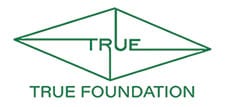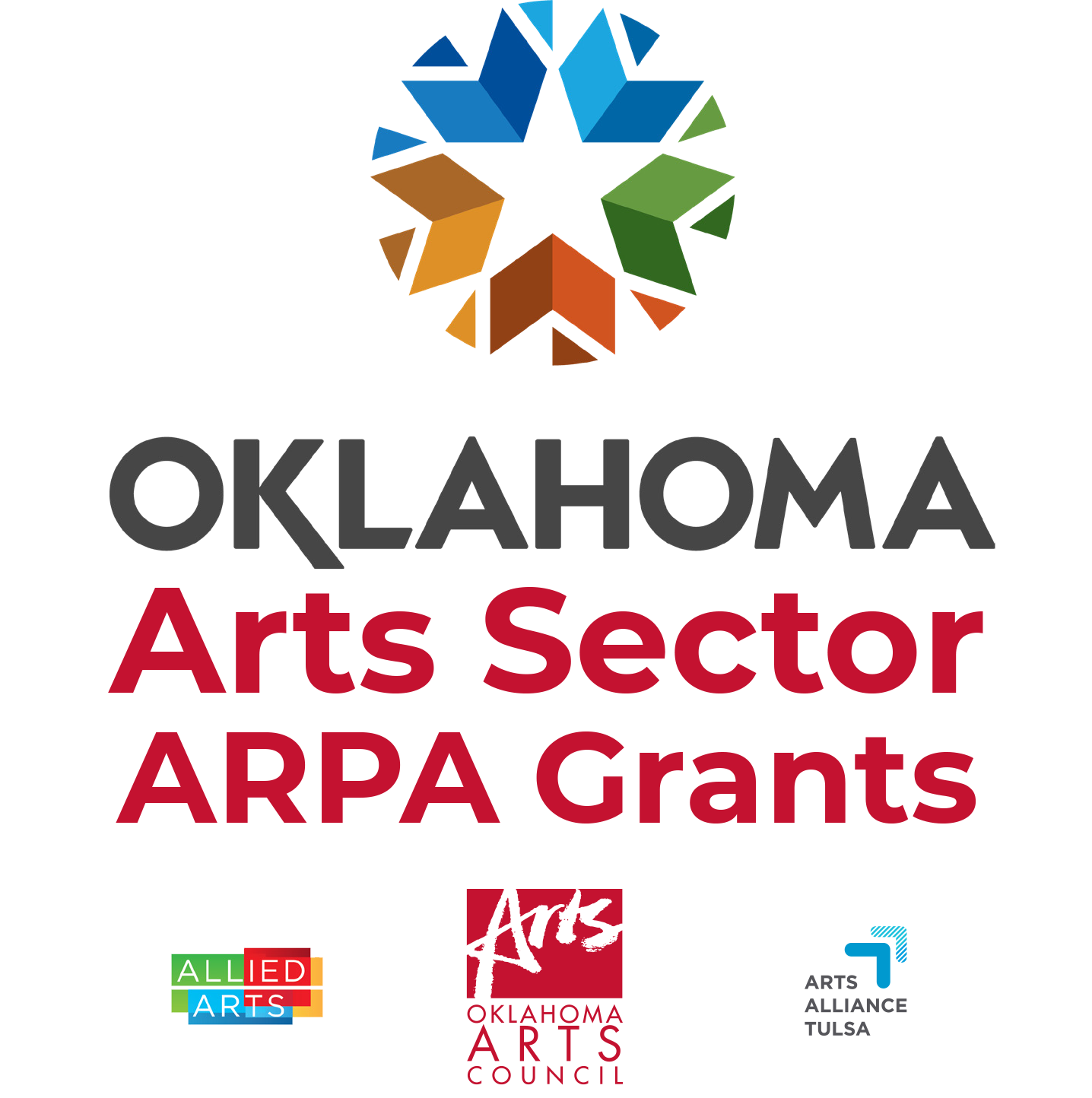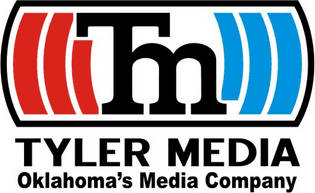
Presented by the A. Keith Brodkin Contemporary Western Artists Project and Exhibit Curator Kera Newby. |
 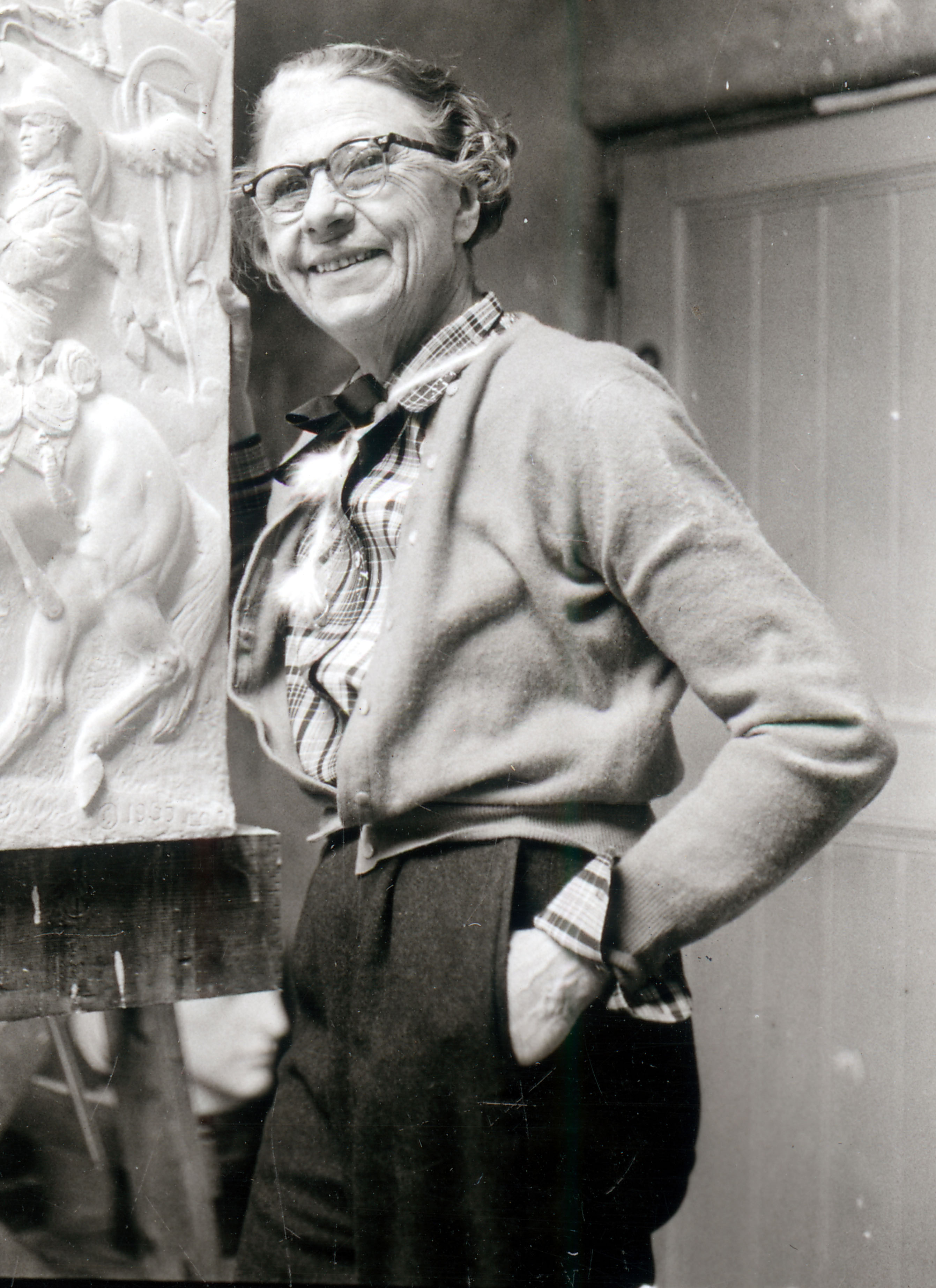 Sculptors Laura Gardin Fraser and Glenna Goodacre are agents of change. Over the course of the United States Mint’s two hundred year history, they are the only two women artists to design coins for national circulation.Fraser first partnered with her sculptor husband James Earle Fraser to create the Oregon Trail Memorial Half Dollar in 1926. She then entered a contest for a solo coin project – designing the Washington Quarter. She won, but a series of events occurred that caused it to only be minted in 1999 as a commemorative coin.Glenna Goodacre continued Fraser’s legacy by sculpting the Sacagawea Millennium Gold Dollar. Like Fraser, Goodacre entered a contest and won. Presenting the subject looking over the shoulder and carrying a child was new to US coins, and the design caught the nation’s attention.Together Fraser and Goodacre broke barriers and made lasting change. Sculptors Laura Gardin Fraser and Glenna Goodacre are agents of change. Over the course of the United States Mint’s two hundred year history, they are the only two women artists to design coins for national circulation.Fraser first partnered with her sculptor husband James Earle Fraser to create the Oregon Trail Memorial Half Dollar in 1926. She then entered a contest for a solo coin project – designing the Washington Quarter. She won, but a series of events occurred that caused it to only be minted in 1999 as a commemorative coin.Glenna Goodacre continued Fraser’s legacy by sculpting the Sacagawea Millennium Gold Dollar. Like Fraser, Goodacre entered a contest and won. Presenting the subject looking over the shoulder and carrying a child was new to US coins, and the design caught the nation’s attention.Together Fraser and Goodacre broke barriers and made lasting change. |
 Laura Gardin Fraser (1889-1966) sculpted everything from coins to larger than life monuments. In 1931 she won a contest to design the United States George Washington Bicentennial Medal. The medal served as a souvenir of the celebration of Washington’s two hundredth birthday in 1933, but also as a prize for a variety of contests in schools across the country.The Commission of Fine Arts working with the George Washington Bicentennial Commission, stated in the rules of the contest that the artist chosen to sculpt the medal would also redesign the United States quarter dollar in honor of the first president. When Fraser’s coin design was presented to Treasury Secretary Andrew Mellon, he rejected it. In a letter to Commission of Fine Arts Chairman Charles Moore, Mellon said, “I should point out that the Treasury Department is not a party to the program of competition… involving the coinage of a half or quarter dollar.” He wanted control over the final product, and called for a new competition. Laura Gardin Fraser (1889-1966) sculpted everything from coins to larger than life monuments. In 1931 she won a contest to design the United States George Washington Bicentennial Medal. The medal served as a souvenir of the celebration of Washington’s two hundredth birthday in 1933, but also as a prize for a variety of contests in schools across the country.The Commission of Fine Arts working with the George Washington Bicentennial Commission, stated in the rules of the contest that the artist chosen to sculpt the medal would also redesign the United States quarter dollar in honor of the first president. When Fraser’s coin design was presented to Treasury Secretary Andrew Mellon, he rejected it. In a letter to Commission of Fine Arts Chairman Charles Moore, Mellon said, “I should point out that the Treasury Department is not a party to the program of competition… involving the coinage of a half or quarter dollar.” He wanted control over the final product, and called for a new competition. |
 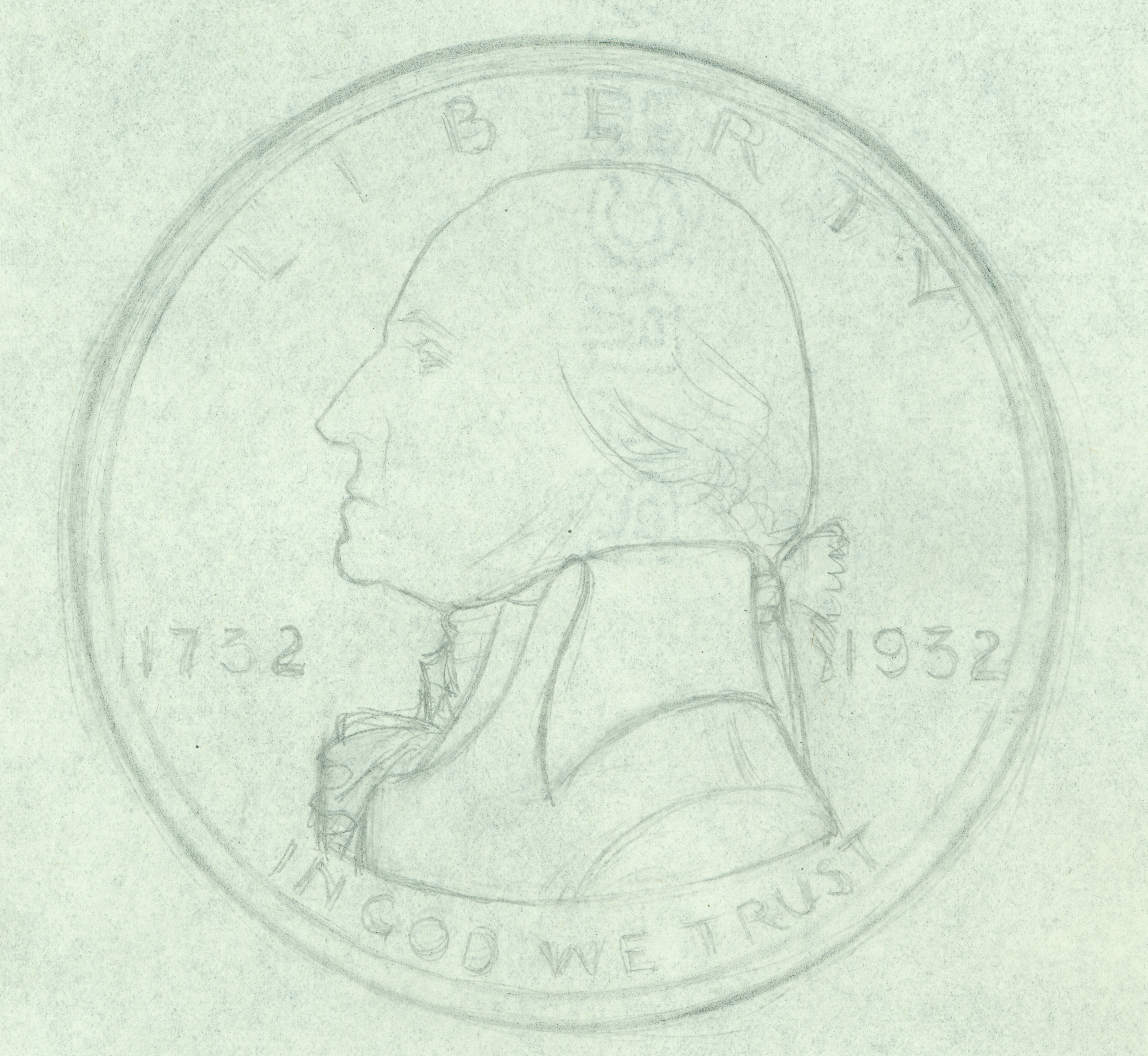 The Commission of Fine Arts held a new competition and selected Fraser’s design from the anonymous entries. Chairman Moore wrote to Secretary Mellon and said this about Fraser’s design, “It would result in a coin, simple, direct and permanent in character, and at the same time characterized by an elegance which would make it worthy of being placed with the coins of nations which have had the benefit of long experience and in which technical skill has been highly developed.” Secretary Mellon disagreed. He decided sculptor John Flanagan’s entry was the final winner. Flanagan’s design is still used on the quarter today.Even though Fraser’s sculpture for the Washington Quarter was not minted in 1933, it did not go to waste. The Mint retained her drawings and sculptures, and honored her by using the design for the 1999 George Washington Commemorative Five Dollar Coin. It celebrated the two hundredth anniversary of Washington’s death.Although Laura Gardin Fraser never saw her Washington Quarter sculpture minted, she made change by winning elite competitions during a time when women artists were rarely considered. The Commission of Fine Arts held a new competition and selected Fraser’s design from the anonymous entries. Chairman Moore wrote to Secretary Mellon and said this about Fraser’s design, “It would result in a coin, simple, direct and permanent in character, and at the same time characterized by an elegance which would make it worthy of being placed with the coins of nations which have had the benefit of long experience and in which technical skill has been highly developed.” Secretary Mellon disagreed. He decided sculptor John Flanagan’s entry was the final winner. Flanagan’s design is still used on the quarter today.Even though Fraser’s sculpture for the Washington Quarter was not minted in 1933, it did not go to waste. The Mint retained her drawings and sculptures, and honored her by using the design for the 1999 George Washington Commemorative Five Dollar Coin. It celebrated the two hundredth anniversary of Washington’s death.Although Laura Gardin Fraser never saw her Washington Quarter sculpture minted, she made change by winning elite competitions during a time when women artists were rarely considered. |
 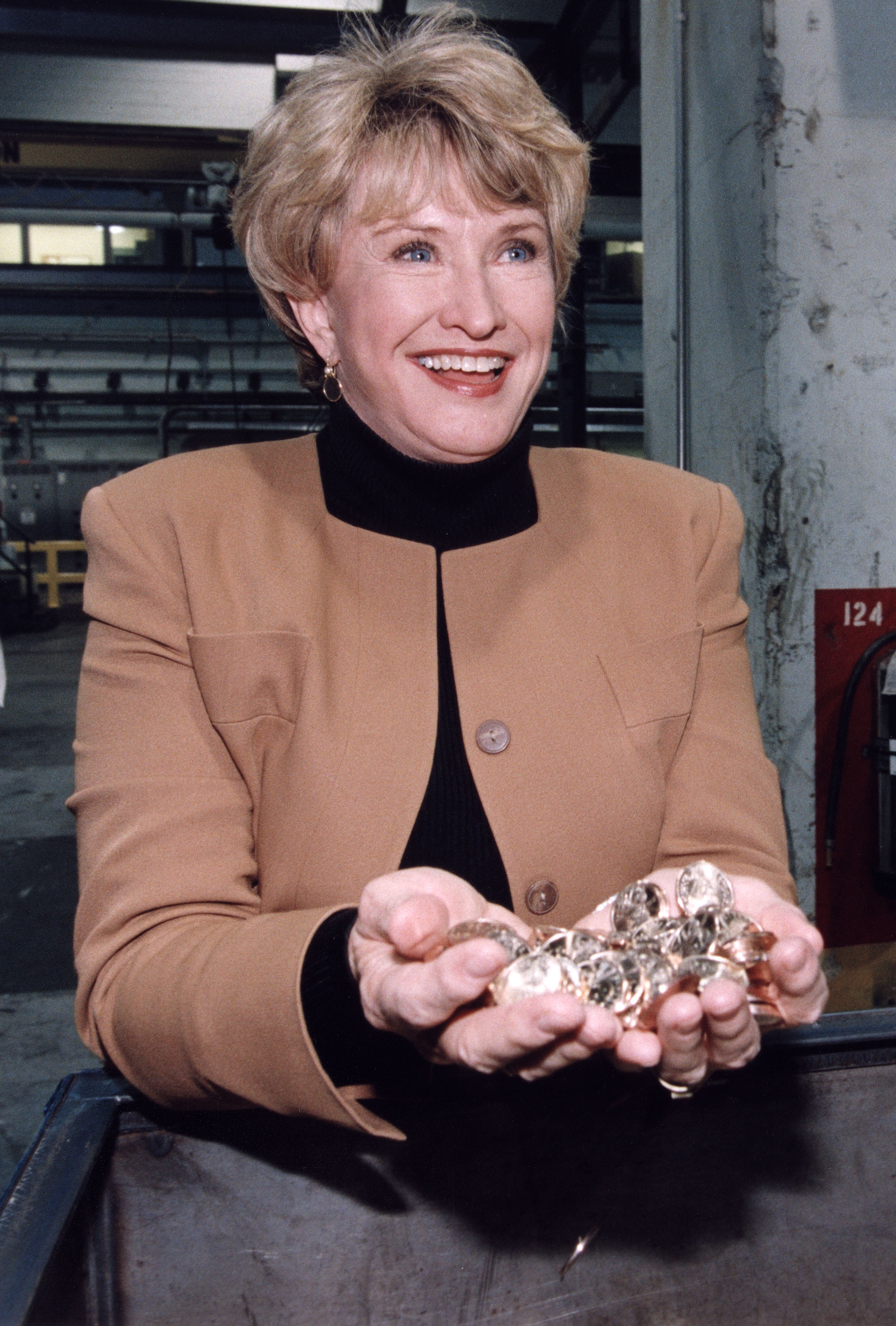 Glenna Goodacre’s (1939-) artistic versatility has resulted in sculptures such as the Vietnam Women’s Memorial (1993) on the Washington Mall, and the Irish Memorial (2003) in Philadelphia, Pennsylvania. In early 1998 she learned about a competition to redesign the United States dollar coin. After sending brochures of her work to people involved in the process, she was chosen to participate in the design contest.Members of Congress passed legislation that announced the coin of the new millennium would depict Sacagawea, a Shoshone teen who, along with her husband and infant son, accompanied Lewis and Clark during the Corps of Discovery (1804-1806). Glenna Goodacre’s (1939-) artistic versatility has resulted in sculptures such as the Vietnam Women’s Memorial (1993) on the Washington Mall, and the Irish Memorial (2003) in Philadelphia, Pennsylvania. In early 1998 she learned about a competition to redesign the United States dollar coin. After sending brochures of her work to people involved in the process, she was chosen to participate in the design contest.Members of Congress passed legislation that announced the coin of the new millennium would depict Sacagawea, a Shoshone teen who, along with her husband and infant son, accompanied Lewis and Clark during the Corps of Discovery (1804-1806). |
 The US Mint invited twenty-three artists to submit ideas for the coin, resulting in 121 different designs. Goodacre hired Randy’L Teton, a young woman with Shoshone ancestry, as her model.She entered six individual concepts into the contest. Members of the Mint’s coin committee chose proposals to participate in a national online vote, and five out of the six designs were Goodacre’s. Her innovative sculpture of Sacagawea with her infant son Jean-Baptiste won the competition.After nearly a year of small alterations, the Sacagawea Dollar was struck in November 1999, and released into public circulation in February 2000.Goodacre said this about the coin, “I just loved doing it. I wanted to depict her leadership of the expedition with strength and dignity.” The US Mint invited twenty-three artists to submit ideas for the coin, resulting in 121 different designs. Goodacre hired Randy’L Teton, a young woman with Shoshone ancestry, as her model.She entered six individual concepts into the contest. Members of the Mint’s coin committee chose proposals to participate in a national online vote, and five out of the six designs were Goodacre’s. Her innovative sculpture of Sacagawea with her infant son Jean-Baptiste won the competition.After nearly a year of small alterations, the Sacagawea Dollar was struck in November 1999, and released into public circulation in February 2000.Goodacre said this about the coin, “I just loved doing it. I wanted to depict her leadership of the expedition with strength and dignity.”
|



